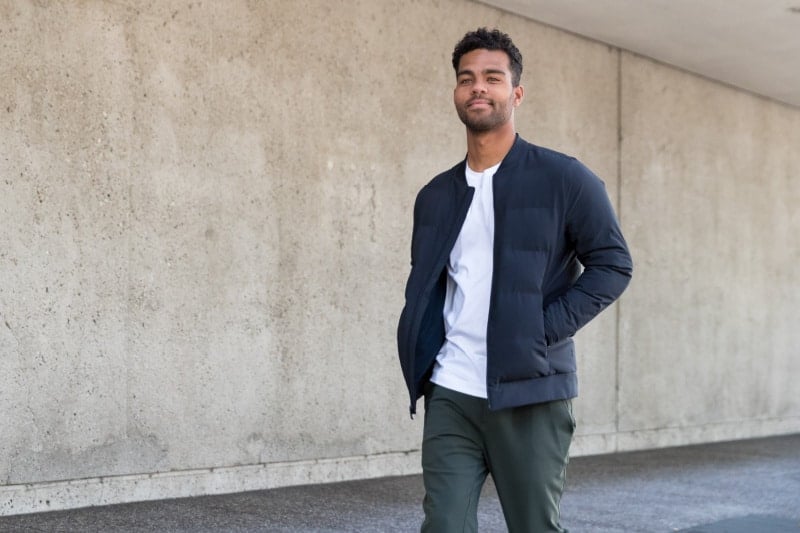
The use of fashion analytics helps retailers predict the demand for products. It works by tracking the items that consumers buy online and then analysing this data. This data can be used to help retailers determine which items will be most popular and which items will become obsolete. This allows retailers to mark down their inventory and stay competitive. Implementing fashion analytics is not easy. This article will demonstrate how big data can assist you in fashion analytics.
Importance of data integration in fashion analytics
There are many benefits to big data for fashion businesses, such as a better customer experience and targeted products. Consumers have to be confident that these data are being used responsibly and with their permission. Companies must provide a safe environment for consumers and make it clear how they use and collect their data.
The fashion industry is a fast-paced field, and big data has become essential. This data is being used by retailers to develop new products, track consumer behavior and decide what customers want. Those who use big data to make these decisions will remain competitive and thrive, despite the rising tide of e-commerce.

Data integration tools make it easier to use data from diverse sources and increase your data's value. They can help you develop your business quickly and safely. Derek Rose, a top-end fashion brand used Microsoft Dynamics and Salesforce to manage their customer relationships and accounts. However, they were missing opportunities for business development, and were not using their direct resources to their full potential.
Advanced analytics in the fashion business: The challenges
Fashion has always struggled to anticipate trends and adjust production to meet consumer needs. This can often lead to excessive inventory levels or discounts that reduce gross margins. These issues can be fixed by advanced analytics. Fashion retailers will be better able to meet customer demands. Data-driven analysis can help improve customer experience and increase conversion rates by combining business intelligence with consumer data.
Data-driven Analytics can be used by retailers to analyze data from in-store and online sales to identify products that are selling well. To make better predictions about what size and type of clothes customers will purchase, retailers can use analytics. This information can be used by retailers to improve customer fit and decrease returns. Retailers can also compare pricing with their competitors to improve sales and forecast accuracy.
Fashion retailers also have to deal with shifting seasons and the pressure to deliver the right sizes and colors at right times. Additionally, retailers have to manage inventory and deal with problems like mismatched stock and incorrect inventory. Fashion retailers must also deal with the high costs of product markdowns, returns, and other challenges. This can negatively affect online store profitability.

Benefits of leveraging big data in fashion analytics
Fashion companies can make use of big data in fashion analysis to better understand customers. This type of data is typically available online and can help fashion companies segment their customer base, identify patterns in purchasing, and create better product offerings. Fashion analytics can help retailers predict future sales and identify emerging trends.
Predictive analytics in fashion includes demand forecasting. This is an AI-driven process that predicts future demand for a particular item. This can help retailers decrease inventory costs and increase sales. Retailers can use predictive analytics to determine the best time to transfer inventory and increase sales.
Companies from all industries can use big data to make more informed decisions. Starbucks, for instance, uses data in order to predict store success rates and future performance. The company can also avoid opening unprofitable stores. Companies also benefit from big data in order to predict fashion trends and analyze consumer behavior.
FAQ
Is mobile influencing the fashion industry?
We all know that smartphones are more powerful than ever. Today they can take photos, play music, record videos and even surf the internet. It is no surprise that mobile phones are being used to check out outfits.
Some people use them to measure the size of a dress before purchasing it. Some people also use them for taking photos in front of mirrors.
You should take a picture with your cellphone if you plan on buying a new dress.
What will happen to consumer behavior after COVID-19 is over?
We all know people are spending less right now. This doesn't mean people won't want money to spend on themselves in future.
Shopping is a fun activity, so now is a good time for you to go shopping. Shopping may be something you enjoy more than ever.
Although there are less people in malls, you still have many options. Keep safe and adhere to social distancing guidelines.
And don't forget to wash your hands frequently. This simple step can prevent the spread coronavirus.
Now that we've seen some trends that will influence retail's future, let us take a closer glance at what's on the horizon.
What will consumers buy post-pandemic 2022?
Consumers will continue shopping for products that protect their health and improve their lives. This includes foods such as snacks, beverages, pet food, and supplements.
They also tend to spend less on insurance. This is because it is expected that the cost of health insurance will rise 10% per annum over the next 10 years.
The most significant change we anticipate is a greater focus on prevention and wellness. Products that promote healthy lifestyles, and prevent disease will be sought after by consumers.
This means you should look for products that can help you sleep better, reduce stress levels, or keep your hair and skin looking younger.
Healthy living will become more important to shoppers because of the pandemic, leading to higher spending on preventive care.
What are the current consumer trends
Consumer trends are more important than ever because they affect our lives. They also impact the future direction of commerce and business.
The world today is changing faster than ever before. We live in an era of rapid technological advancement. Our lives become more connected and mobile. We are experiencing unprecedented levels and changes.
This means that those who do well, in the long run, will be those who adapt quickly. The best people are always ahead of the curve.
Consumers are faced with options that aren't possible just a few years ago. This creates huge opportunities and challenges for brands as well as businesses. But it also brings challenges.
For example, there is a huge demand for convenience, driving the growth of online shopping and eCommerce. Consumers want options and choices. Consumers expect to be able to find what they need when they need it.
They want to be able buy products and services in a way that makes sense to them. They want to be able compare prices, read reviews, and share information quickly.
But these changes are rapid and easy to miss. Stay current with new developments and employ strategies that keep you competitive.
Two key areas are essential to success in this environment: innovation and customer service. These are key factors to staying ahead in the marketplace.
It is not enough to provide great service and sell quality products. Innovation is key. And you must deliver exceptional customer service.
The term "customer obsession" is something you may have heard. This is the concept that you can exceed your customers' expectations if you care deeply about them.
Customers expect great service. Many businesses don't realize this. Instead, they treat customers as if they were any other customer.
They try to market their products and services by focusing on price and product features.
But customers aren't buying products or services anymore. They choose between several alternatives.
You should not be focusing only on your price. Instead, create unique value propositions. This will help you to stand out among your competitors.
It's not about making things better. It's about offering something entirely different.
This is how you can do it! By innovating!
By being creative!
By thinking out-of-the-box!
The most important thing is to provide excellent customer service.
Statistics
- and what they are traveling for, with 78% of respondents wanting to impact the community they visit positively.1 Eating & Shopping at Small businesses (americanexpress.com)
- While 19% of respondents state they didn't travel in the past two years, other families' favorite experiences included: domestic travel (19%), beach resorts (12%), road trips (11%), international travel (10%), staycations (7%), camping (6%), and more.1 (americanexpress.com)
- 70% of parents surveyed agree that in 2022 they are planning to take their first international trip with their children since before the pandemic. (americanexpress.com)
- As experts quabble over the official call, most consumers are already experiencing economic uncertainty: 52% say their household income is unstable, up 36% from three months ago, and 73% have either reduced or maintained their overall spending levels. (junglescout.com)
- Just 5% of consumers expect to wait until December to begin shopping, while more than 70% said they'd start before Thanksgiving. (junglescout.com)
External Links
How To
What are the latest trends in the travel industry
The world of tourism and travel is experiencing many changes right now. These industries are constantly changing thanks to innovation and more technology.
Travel is more popular than ever and there are many ways for people to go. We've seen self-catering accommodation becoming more popular. This means that travelers can choose where they want to stay based on their preferences.
People are choosing to book holiday vacations online, rather than wait until the last minute. This is because they want to ensure they find the best deals and value for money when booking.
Many companies offer flexible payment plans that can be arranged monthly or annually. Customers are able to save money as they plan their trip.
Another trend is the sharing economy, which is becoming more popular. Sharing economy: People rent out their cars or spare rooms to guests to save money.
Airbnb, an app that allows users to rent out their homes and properties to guests, is also available. These services are helping people to earn extra income as well as save money.
The rise in popularity of social media platforms like Instagram, Facebook and Twitter has allowed travelers to connect with local business and meet fellow travellers. This makes travel much more enjoyable and easier.
These are just a few examples of the many innovations and changes happening in the industry. There are so many places and cultures that we can explore today.